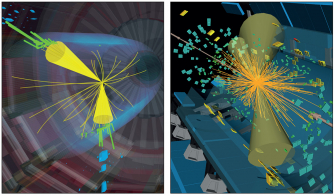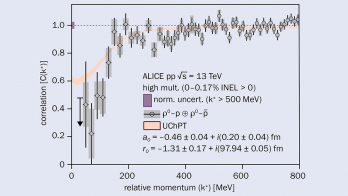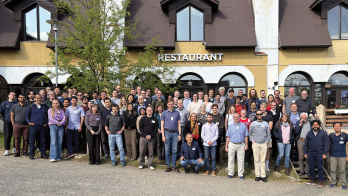

Image credit: CMS-PHO-EVENTS-2016-009.
Proton–nucleus collisions provide a crucial tool to investigate the quark–gluon plasma (QGP), a state of nuclear matter with a high energy density spread over a relatively large volume. Although proton–lead (pPb) collision systems have been considered to be too small and dilute to themselves form a QGP, they have served as a reference in the search for QGP signatures in the collisions of two heavy ions. Nonetheless, in the first-ever pPb collisions at the LHC, collected in 2013, the CMS experiment observed QGP-like features in very high multiplicity pPb events.
Subsequent studies have supported the hypothesis that a dense, QGP-like medium may be formed in high multiplicity pPb systems. However, several key signatures of a dense QGP medium, observed in PbPb collisions, remain unestablished for pPb events. These unestablished signatures include the loss of energy from high-energy quarks and gluons (“jet quenching”) and the suppression of quarkonium states (J/ψ and ϒ mesons). A hint of a stronger suppression of ϒ(2S) mesons compared to ϒ(1S) mesons is observed in the 2013 pPb data, but a conclusive comparison with PbPb data at similar high multiplicities has not been possible because of limited statistical precision in the pPb data.

At the end of 2016, CMS again collected pPb collisions, with a higher energy and a larger accumulated data sample than in 2013. The experiment is thus poised to relaunch its comprehensive search for QPG signatures in high multiplicity pPb systems. Compared to 2013, the yields of relevant events (see figure) are enhanced by a factor of 20–30. This will enable many new studies that might provide conclusive results on the formation of QGP in pPb events.








